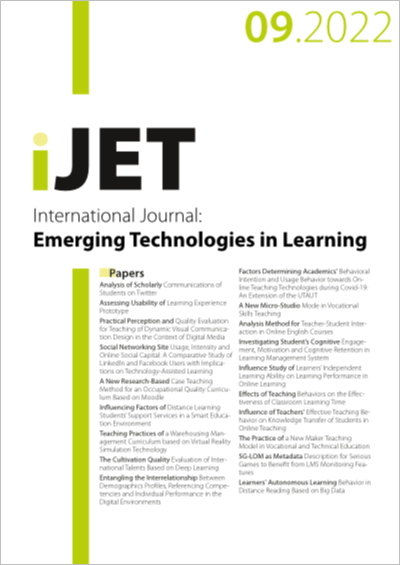A New Micro-Studio Mode in Vocational Skills Teaching
DOI:
https://doi.org/10.3991/ijet.v17i09.30933Keywords:
micro, studio, vocational skills teaching, information entropyAbstract
The methods currently applied in engineering vocational skills teaching are mostly boring for students and even disconnected from the development of enterprises. It is often difficult for students to truly master vocational skills under the traditional teaching mode. Firstly, the concept of agile development mode was introduced to put forward a new studio-based microteaching method according to the characteristics of engineering colleges and the requirements of vocational skills teaching. Under the support of informatization, the procedure of implementing new vocational skills teaching was designed as “project selecting—plan making—activity exploration—achievement exchange—activity evaluation”. Then, the information entropy evaluation method was used to divide the new teaching strategy into four steps: determining the classification of groups, designing the chain mechanism of evaluation, judging the consistency of evaluation results, and identifying the chain relationship and the final ranking. The results show that this new teaching mode can improve students’ motivation of learning vocational skills and promote their mastery of vocational skills. Therefore, it is beneficial to popularize this teaching reform idea in the cultivation of vocational skills among students in engineering colleges.
Downloads
Published
How to Cite
Issue
Section
License
Copyright (c) 2022 Yun Yu

This work is licensed under a Creative Commons Attribution 4.0 International License.


